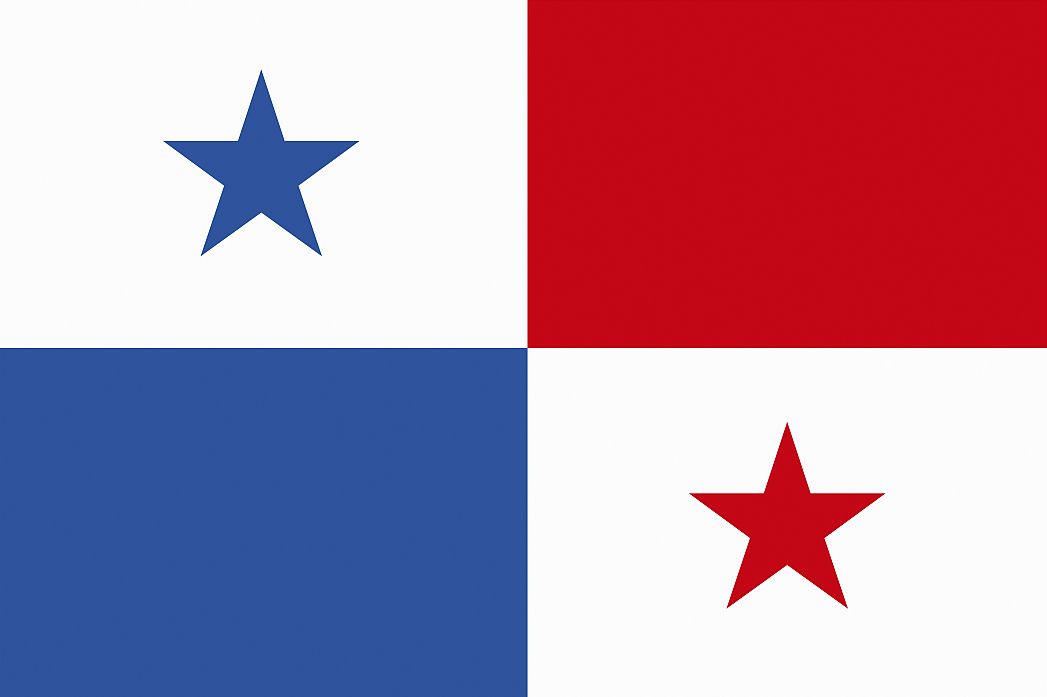The flag of Panama is a rectangle made up of three different colors of white, red, and blue. The flag is further divided into four equal quarters. Two quarters are white with five-pointed stars in the middle. One star is red and the other is blue. The remaining two quarters are in plain blue and red colors. The Panamanian flag was adopted on December 3, 1903. November 4 is the Panamanian flag day celebrated to mark separation of Colombia from Panama.
The two plain colors of blue and red represent the country’s liberal and conservative political parties. The two stars in each quarter, with one in red and the other blue, represent the civic virtues honesty and purity while the red star stands for authority and law. The white color represents peace between the parties. Another theory states that the blue represents the Pacific Ocean and Caribbean, while the blood represents the blood of people who lost their lives for the country. The red star represents the authority of law and the blue star stands for honesty and purity.
The Panamanian flag was officially adopted in 1903 after the country gained independence from Spain. It was designed by Mr. Manuel Amador Jr and made by Ms. Maria Ossa de Amor. However, the first flag design consisted of thirteen stripes of red and yellow which alternated. It was rejected by leader Manuel Amador Guerrero before another design was made by Mr. Amador.
Before the current flag, Panama’s first flag consisted of thirteen horizontal stripes of color. The colors alternated from red and yellow and a blue canton with two interconnected suns at the top left of the rectangularly shaped flag. The two suns represented South and North America which are in between Panama - Panama connects the two continents. The first Panamanian flag design was made by the wife of Philippe-Jean Bunau-Varilla, and it was based on the US flag.
This page was last modified on May 1st, 2018
More on Graphicmaps

Published on 2019-11-06
What is a Trade Embargo?

Published on 2019-11-04
Which Two Countries Used to Have the Same Flag?

Published on 2019-09-16
What Is the Only Two-Sided State Flag?

Published on 2019-09-16
Which Country Flag Looks Like the Texas Flag?

Published on 2019-08-29
Flags That Resemble the US Flag

Published on 2019-08-20
